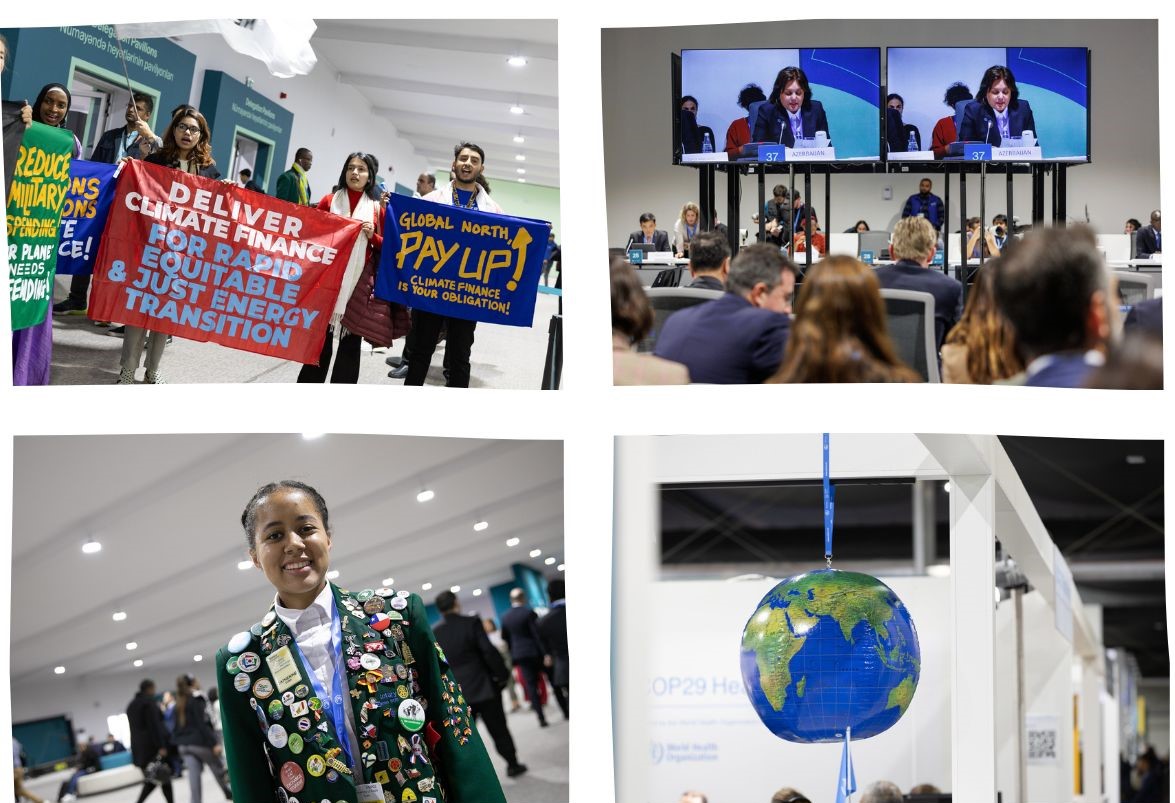I have attended two UNFCCC Conferences of the Parties, or COP meetings, in person. These huge climate change negotiations are well known for being chaotic but often life-changing experiences.
This year, I attended the negotiations COP29 for the first time online.
I have been asked by many colleagues about the experience of attending the conference online. It does seem puzzling for tens of thousands (and sometimes hundreds of thousands) of people to fly across the world to a climate change conference, this year being held in Baku, Azerbaijan, when there is the option to watch online. So, I thought it would be useful to honestly describe the experience of attending a COP online.
There are a lot of opinions about the effectiveness of COP conferences. Some climate activists, including Greta Thunberg, have publicly boycotted the COPs for being a lot of talk and not a lot of action. This year, Papua New Guinea also refused to send a delegation to the talks in Baku, citing their frustration with the inaction in the UNFCCC.
It is important to have observers in the negotiating rooms to make sure that negotiators feel that the world is literally watching them.
I have benefited from and enjoyed participating in the UNFCCC processes. I admit, I too am constantly disappointed by fickle promises and frustrating negotiations. But as a civil society attendee, I have learnt an extraordinary amount from these events and found myself in incredibly supportive community of climate activists, advocates and academics, which I look forward to seeing each year.
Missing out on this community spirit has to be one of the most significant drawbacks from attending the conference online. The atmosphere at a COP is truly electric. It's like a summer camp for climate change nerds, you make good friends quickly. But online, the community spaces via Whatsapp groups and the UNFCCC portal are mostly slow and impersonal – the chats often about technical problems.

In general, I did not “do” a lot of COP this year. As I am located in Australia, my COP day started at 5pm. I often found I was tired after work or distracted with the need to go buy groceries. Even when I was watching COP proceedings, it was easy for me to just “have it in the background” while I did other work.
One thing I really missed about in-person attendance was the pavilion spaces. At previous COPs I have attended I had heard the pavilion spaces called the “show-off space” or likened to the World Fair. They are the parts of COP where countries and organisations hold events separate to the official UNFCCC proceedings. Being online, you miss the more candid and honest discussions held by negotiators and activists alike that are had in these spaces.
In terms of one’s impact at COP, it is highly unlikely that, even in person, a civil society individual is able to impact the negotiations in a significant way. Negotiators have already adopted state-mandated positions that they decide on (or are told of) weeks, if not months, in advance. However, in-person, there is more chance to meet with and make relationships with negotiators. I also think it is important to have observers in the negotiating rooms to make sure that negotiators feel that the world is literally watching them. But online, my impact in that capacity is nullified behind my screen.
A positive is that I found that the technology worked relatively well. I found the COP29 online platform intuitive to use, easy to log in, and the feature to change the timezone was extremely helpful. Any technology issues I experienced online were technology issues with microphones and slides that were also happening in-person within the negotiations. But it is also apparent that people who do not have access to strong internet connections, particularly from the Global South, do find connecting to COP virtually more difficult.
Regardless of my review, I was not going to be able to attend the COP in person this year due to clashes in timing and a difficulty to find funding to support my travel to Azerbaijan. So, I was grateful to have been able to attend online, and I value that the virtual option does make the UNFCCC more accessible.
Whether attending the COPs in-person is a good idea is a debate that will continue.

